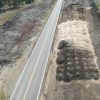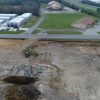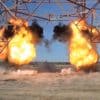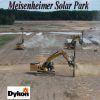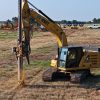PROJECT DETAILS
Energy prices are high and getting higher all the time. Demand for energy is ever growing and availability declines daily. As time goes on fossil fuel supplies are continually depleted and not being replenished. Some day in the future the vast supplies of this precious resource will be gone and we will be forced to turn to other sources for energy or return to the Stone Age.
In addition to the problem of depleting resources, we are faced with the reality of the by products of fossil fuel consumption. Pollution, smog and increasing levels of carbon dioxide are released into the atmosphere. The importance of developing clean renewable energy is escalating in proportion to the growing need for energy and clean air.
One such source for clean renewable energy is wind. Turbine generators which are driven by wind energy are being built where there is a sufficient supply to drive them economically.
One such area is near Lawton, Oklahoma in an area locally called the Slick Hills. The project is called Blue Canyon Wind Farm Phase Five. Phase one and two are currently finished and have been in operation for some time now. Construction on Phase Five began in early summer of 2009 and is expected to be completed sometime late the same year.
The wind turbines are manufactured by General Electric. Each turbine has a 1.5 megawatt capacity at full output and will produce enough power to light roughly 500 homes. More information on these turbines can be found at General Electric’s web site. Phase five will see the construction of 66 of these towers. The project is owned by Horizon Energy and the General Contractor is White Construction Company.



